Bookshelf
by Joyce Brusin
How To Be Lost By Amanda Eyre Ward, ’97 M.F.A.
By Amanda Eyre Ward, ’97 M.F.A.
San Francisco: MacAdam/Cage, 2004, 290 pp., $24
This engaging and intricately plotted novel could just as well have been titled How To Be Found. The story of a mother and her three daughters spans more than twenty years and has at its heart the age-old truism that letting go of a lost love can sometimes bring it back to us. The story originates in New York, travels to New Orleans, and ultimately reaches Missoula. Here, the reader is treated to descriptions of familiar downtown landmarks, such as the Wilma apartments, Charlie B’s, and the Bon Marché. Other establishments, given fictitious names, are open to speculation.
Local diversions aside, the story begins as a sad one. A five-year-old girl mysteriously disappears on the same afternoon that she and her two sisters were plotting to run away. Little Ellie’s disappearance changes everything for her family, who eventually lose one another to guilt and sadness. Even though local authorities believe Ellie has been murdered, her mother and eldest sister, Caroline, refuse to concede her death. Decades later, convinced they have spotted her in a news photo taken in Arlee, Montana, they decide that even such a flimsy piece of evidence must be followed up.
The search for her sister forces the thirty-something Caroline to leave her job as a cocktail waitress in New Orleans, where she trained as a musician. It is a telling omen that when she lands in Missoula, Caroline answers an ad for a pianist to play evenings at a local bar, where the crowd is described as “genial and shabby.”
As Caroline searches Missoula for the sister whose loss drove her family apart, she closes the sardonic distance she has carefully maintained with her mother and remaining sister. In a local store she finds T-shirts that read: Montana, the Last Best Place to Hide, but it is in Missoula that Caroline emerges from the shadows of her long vigil for her little sister and begins to claim her rightful place among the living.
Told in straightforward, unadorned prose, the story of Caroline’s search gradually uncovers an increasingly convincing chain of evidence. In the end, we are amazed that Ellie’s disappearance originated closer to home than anyone had imagined.
Season of the Snake By Claire Davis, ’93 M.F.A.
By Claire Davis, ’93 M.F.A.
New York: St. Martin’s Press, 2005, 276 pp., $23.95
Claire Davis’ second novel makes its home in the West, as did her award-winning first work, Winter Range. Set in the rugged canyons and sleepy college towns of central Idaho, this suspenseful story focuses not on detectives and crime scenes, but on families and the secrets they sometimes keep. Like the Snake River on whose banks much of it takes place, the novel carves its course gradually, while its unwitting characters discover how little they actually know about the people closest to them.
Nance is a dedicated herpetologist, trained to observe and analyze in detail the behavior of the rattlesnakes in which she specializes. But as the wife of an elementary school principal, she finds herself stymied when her husband, Ned, retreats one summer into silence and unexplained hostility. Nance is familiar with unexpected and tough challenges: as a child in Wisconsin, she lost her mother to illness, and later her young husband to an act of meaningless violence. In the midst of her confusion, her younger sister, Meredith, arrives for an extended visit and begins to challenge Nance’s recurring denials about what they are both observing in Ned.
Though Nance has for many years believed her sister to be troubled, she begins to trust Meredith’s finely honed instincts and to question the increasingly bizarre behavior of her husband. As the relationship between the sisters prospers, Nance’s marriage crumbles.
Throughout her story, Nance remains a curious, observant scientist who loves the intricacies of the snakes she studies. As she swims in a clear river pool, Nance spots a rattlesnake in molt coiled on the rocky shore above her and becomes mesmerized by the blue of its eye. “But somehow, in the wild, it makes all the difference, seeing that eye—that liquid blue—floating, as it appears to, against the grays of rock and dusky sheath. In a matter of days, the scale will soften and clear and shortly thereafter, over another four or five days, the snake will shed its outer sheath intact, revealing the bright new coat of scales ... . She can see the small tearing that’s begun on the supralabial and infralabial scales ... . ”
First-hand knowledge of the cycles of the natural world help Nance and her sister survive when, by summer’s end, the most lethal family secret is revealed.
The Right Madness by James Crumley
by James Crumley
Crumley taught creative writing classes at UM.
New York: Viking Penguin, 2005, 289 pp., $24.95
C.W. Sughrue, a Montana private detective fond of road trips, agreeable women, and an assortment of western watering holes, first came to life in the now-classic Crumley novel, The Last Good Kiss. While time may have settled Sughrue a bit, it has not dulled his finely tuned sense of right and wrong and his sometimes troublesome sympathy for the underdog. As The Right Madness opens, Sughrue is married to a lawyer and helping to parent a twelve-year-old boy. When his best friend, psychiatrist Will MacKinderick, talks him into investigating a peculiar burglary of his office, Sughrue is reluctant to take on a case he suspects won’t enhance his hard-won peace of mind.
It isn’t long before his suspicions are confirmed. With the exception of a pair of affable Persian cats, all who cross his path seem ready to deceive him in their own unique way. When Sughrue’s investigation takes him on the road, the larger-than-life characters he encounters range from free-spirited artists and topless dancers to money launderers, bail bondsmen, and somewhat dubious free-range chicken farmers.
Sughrue narrates all his activities in a rhythmic prose unique to him. Of a “lady lawyer from Butte” who comes to his defense, he says, “Usually in that sort of situation, Claudia would arrive on the wings of an ill-tempered harridan, whipping the air with the poisoned tongues of the Medusa. But she worked Johnny Raymond the other way that morning—all sweetness and politeness with legal icing.”
When he seeks help from the staff at a Seattle hotel, Sughrue discovers other investigators with an interest in his case. “The FBI agent caught my elbow just as I leaned on the counter and asked for the hotel’s manager. He looked about sixteen with his sheared light red curls, pug nose, freckles, and an all-American gap-toothed grin, but his tailored dark-blue suit, white shirt, and rep tie shouted FBI. As did his warm, dry handshake.”
Some of these characters, like the ultra-blonde, statuesque Ukrainian-born Larise Grubenko Guilder, wife of a long-sought witness, subject Sughrue to a string of indignities scattered from Montana to Washington, Colorado, and New Mexico. In the end he throws a few punches of his own and learns far more than he ever wanted to about the small town goings-on of Montana psychiatrists.
My Father on a Bicycle by Patricia Clark, ’80 M.A.
by Patricia Clark, ’80 M.A.
East Lansing: Michigan State University Press, 2005, 89 pp., $19.95
Raised in the Pacific Northwest and now poet in residence at Michigan’s Grand Valley State University, Patricia Clark observes nature’s seemingly random acts of creation and destruction and sees there a mirror for the unpredictability and transience of human life. She received the first book award from Women in Literature Press for her previous collection North of Wandering.
Hiking Near Paradise
Near Paradise Pass, where the icy solitary stream
sent up vapors, I rounded a bend and my heart
thumped a beat to find him down, prone in the road,
his head pillowed on one arm where he lay
smoking. It was the only time I went off alone
with him, overnight, the firs sighing overhead
as we trudged along an old logging road. His eyes
opened, when I got close, and he simply said,
“Reach into my pocket.” I never felt as shy
with him as I did then, fumbling at my father’s
jacket, its lint-lined plaid pocket. A gray-brown
whiskered fieldmouse hid there, trembling and
squeaking like a bedspring. When I asked he said,
“No, you can't bring it home.” Two gentle natures,
the mouse’s and his, how I still think of them napping
heart-to-heart a few minutes there before I came
along. I released it away from the stream, the road,
far from any dangers I could imagine, near
a half-rotted nurse-log carpeted by moss.
It disappeared so fast that my hands never seemed
to have cupped or held it, never reached
into his pocket that long-ago day, the deserted road
impossible to find now, overgrown and lost.
BookBriefs
Big Oil and Their Bankers in the Persian Gulf By Dean Henderson ’91
By Dean Henderson ’91
1706 Diane Street, Papillion, NE: Morris Publishing: Dean Henderson, 2005, 451
pp., $29.90 (includes shipping)
The author provides a researched study of what he labels the four horsemen of oil and the eight families of world banking, tying these people to a global economy controlled by oil, guns, and drugs.
Cut-Away Pass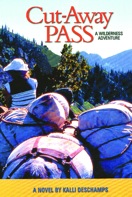 By Kalli Deschamps ’69
By Kalli Deschamps ’69
Missoula: Pictorial Histories Publishing Co., 2004, 167 pp., $14.95
This novel, set in 1976, tells the story of fourteen strangers who thread their way along a narrow trail on horseback through the Anaconda-Pintlar Wilderness. Their purpose is to prove that horsemen can tread as lightly on the land as hikers.
Lookout Cookbook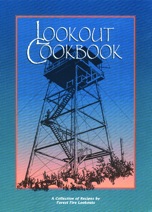 By Libby Langston ’99
By Libby Langston ’99
Coeur D’Alene, ID: Museum of North Idaho, 2005, 141 pp., $14.95
This collection of recipes and reminiscences of forest-fire lookouts will appeal to anyone who loves to camp or has a fascination for lookout towers. Recipes are simple but varied, and the stories, photos, and illustrations provide a glimpse into the life of a lookout.
Pronghorn: Ecology and Management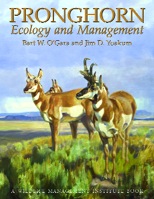 and
and
Prairie Ghost: Pronghorn and Human Interaction in Early America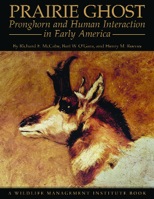 By Bart W. O’Gara, ’68 Ph.D., et. al.
By Bart W. O’Gara, ’68 Ph.D., et. al.
Boulder, CO: University Press of Colorado, 2004, 903 pp., $85 and 175 pp., $29.95 respectively
These books, sponsored by the Wildlife Management Institute, constitute the most comprehensive information available of the behavior, physiology, migration, taxonomy, and management of the pronghorn, as well as a the role played by the animal in people’s lives and cultures over ten millennia. O’Gara, a distinguished alumnus of UM and former leader of the Montana Cooperative Wildlife Research Unit, died before the books went to press.
Scenic Driving Montana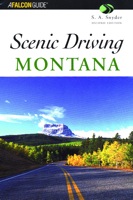 By S.A. Snyder ’88, M.A. ’94
By S.A. Snyder ’88, M.A. ’94
Guilford, CT: Globe Pequot Press, 2005, 180 pp., $14.95
Twenty-four of Montana’s most memorable drives are featured in this guide, taking the motorist to ghost towns, glaciers, hot springs, and great hiking and wildlife-viewing opportunities. Itineraries are provided for treks from 48 miles to 175 miles in length, with maps outlining each drive and highlighting nearby natural features.
![]()
![]()